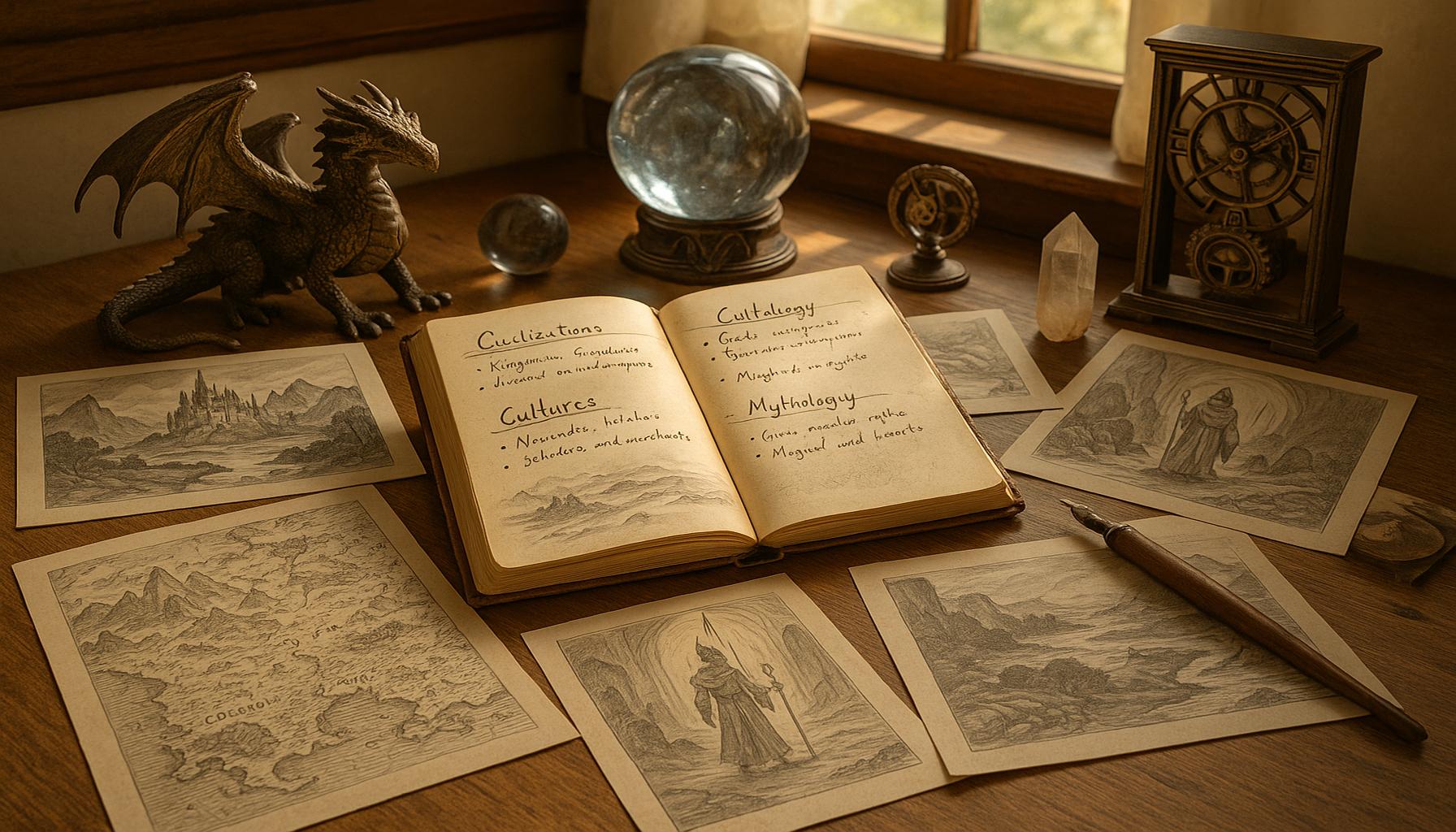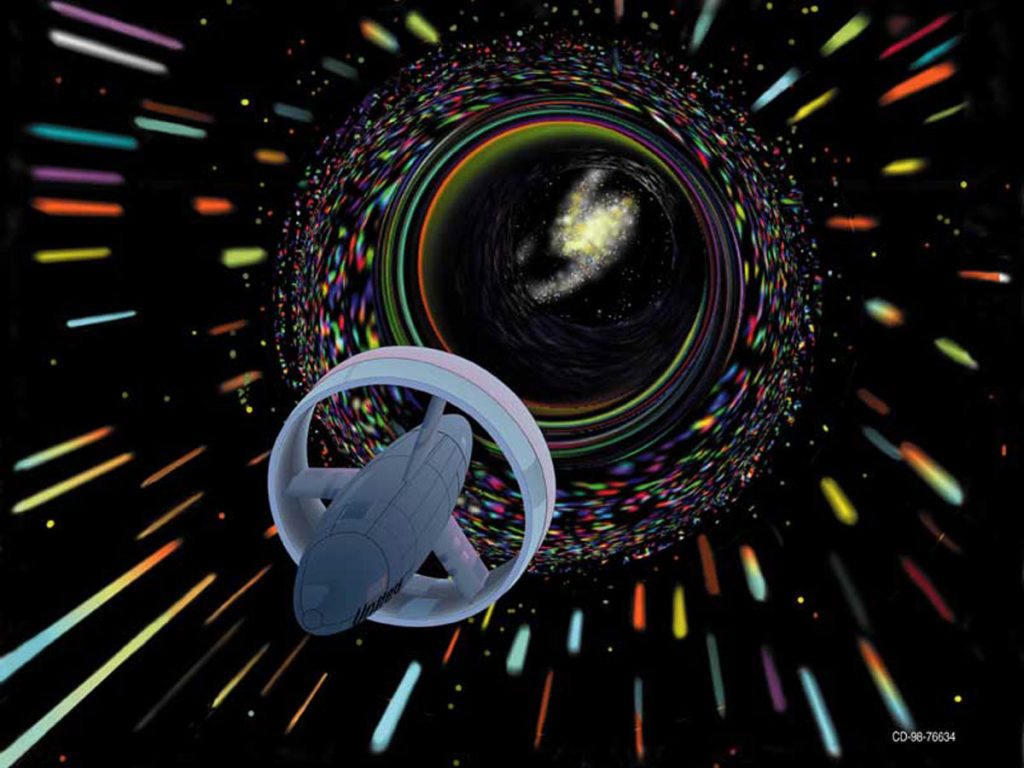Creating Worlds: The Importance of World-Building in Fiction Writing

The Role of World-Building in Storytelling
Every great story begins with a vibrant world that draws readers in. World-building is not just a backdrop; it’s a crucial element that shapes characters, drives plots, and creates immersive experiences. Without it, even the most compelling narratives can fall flat. A well-crafted world is where characters breathe life into the narrative, where conflicts arise, and where resolutions resonate, making the tale memorable for readers.
Consider the various elements essential to effective world-building:
- Cultural Depth: Diverse societies add layers to storytelling, enriching character motivations and interactions. For example, in J.K. Rowling’s Harry Potter series, the magical society is filled with its own culture, norms, and customs, such as the significance of house-elves and the varying attitudes toward magic. This cultural richness provides readers with a scaffold that supports character development and influences interpersonal dynamics.
- Geography: The physical environment influences the narrative, from terrain to climate, affecting everything from laws to lifestyle. In J.R.R. Tolkien’s Middle-earth, the vast differences in geography—from the serene Shire to the treacherous mountains of Mordor—greatly impact the quests of characters. The geography not only sets the stage for conflict but also shapes the societies that inhabit these landscapes, including their resources, trade routes, and social hierarchy.
- History: Understanding a world’s past can provide context for current events and character actions. George R.R. Martin’s A Song of Ice and Fire series is steeped in history, with the war of the Five Kings rooted in past grievances and treaties that affect the motivations of various factions. The depth of history enriches the narrative, allowing readers to engage with the characters’ dilemmas on a more profound level.
Fiction writers like J.K. Rowling, J.R.R. Tolkien, and George R.R. Martin have mastered this art, creating intricate universes that captivate readers and encourage them to delve deeper. Each of these authors constructs worlds populated with distinct rules, cultures, and histories that feel authentic, creating a sense of continuity and coherence that elevates their storytelling.
This article will explore how world-building can transform your writing, making it more engaging and relatable. By employing techniques such as detailed cultural exploration, thoughtful geography considerations, and an understanding of historical context, you can create a world that resonates with readers. Prepare to unlock the secrets of successful fiction and immerse your audience in a place where they can lose themselves. Whether you’re writing science fiction, fantasy, or even contemporary fiction, a well-developed world can be the key to creating lasting bonds between your characters and readers, drawing them into a narrative that feels real and alive.
DISCOVER MORE: Click here to learn about sustainable sculptures

The Building Blocks of a Captivating World
To successfully bring a story to life, understanding the fundamental aspects of world-building is essential. Each element plays a crucial role in developing a cohesive and immersive environment for characters to navigate. Immersive worlds do not merely serve as backdrops; they are integral to the narrative itself, influencing character arcs, settings, and the very essence of the plot.
One of the pivotal building blocks of effective world-building lies in character relationships. Characters should reflect and interact with their environment, allowing their backgrounds and personal experiences to shape their choices. For instance, in the dystopian landscape of Suzanne Collins’ The Hunger Games, the oppressive societal structure and the division among districts create a context for Katniss Everdeen’s rebellion. The way characters are shaped by and resist their world adds depth and dimension to the story, drawing readers into an intricate tapestry of life.
Moreover, rules and systems within a fictional world are paramount. This encompasses everything from laws of magic in fantasy realms to societal hierarchies. In Brandon Sanderson’s Mistborn series, the intricacies of Allomancy—a magic system based on ingesting and utilizing metals—serve as a backbone to the plot, driving character motivations and governing the power dynamics within the story. Such systems provide a framework that both challenges characters and enriches the narrative, ensuring that readers are continuously engaged.
- Consistency: Establishing clear rules and sticking to them strengthens believability. Whether it’s the way magic operates or how a society functions, maintaining consistency helps readers accept the rules of your world.
- Internal Logic: Each world must possess its own logic. This means characters and societies must act and react based on the established set of rules, allowing for authentic decision-making that resonates with readers.
- Dynamic Changes: A world should evolve alongside the characters. As conflicts arise and resolutions occur, the environment should reflect these changes, keeping readers engaged. Consider how the seasons in George R.R. Martin’s series symbolize the broader themes of change and instability.
Finally, the sensory details of world-building cannot be overstated. The sights, sounds, and smells of a setting lend authenticity and create vivid imagery. When Ernest Hemingway painted Paris with his words, he didn’t just describe the streets; he captured the essence of simplicity and artistic fervor that characterized the era. These sensory details invite readers to step into the pages and experience the world, making it more relatable and immersive.
In summary, attentive world-building can be the cornerstone of a compelling narrative. Authors who invest time, creativity, and vision into constructing detailed landscapes, cultures, and systems forge connections that resonate with their audience. With a solid framework in place, writers can craft stories that transcend mere words on a page and transform into dynamic experiences lived and felt by readers around the globe.
Exploring the Depth of World-Building
World-building is more than just a backdrop for narratives; it shapes the very fabric of storytelling. When authors create intricate settings, they allow readers to escape their realities and step into realms filled with adventure, mystery, and emotion. This immersive experience is what drives readers to become loyal fans of particular genres or series, as they yearn to explore every corner of these meticulously crafted worlds. One significant advantage of effective world-building is its ability to influence character development. Characters are often molded by their environments; their motivations, beliefs, and conflicts arise directly from the rules governing the world they inhabit. For instance, in a dystopian setting, a character’s struggle against an oppressive regime can resonate deeply with readers who relate to themes of freedom and justice. Through rich detail and extensive lore, authors can create dynamic characters whose journeys feel authentic and relatable. Additionally, world-building facilitates the exploration of social issues and themes within fiction. By placing characters in diverse cultures or unique societal structures, authors can tackle relevant topics such as governance, racism, or environmental concerns, providing readers with food for thought while they are entertained. Fiction becomes a reflective medium, allowing for the exploration of both the human condition and the values of society.Moreover, investing time in world-building fosters a connection with the audience. Readers become eager to learn about the history, politics, and social dynamics of the universe a writer has created. Intriguingly, many successful franchises now offer supplementary materials—such as maps, history books, and online content—that expand upon the initial world presented in the narrative, creating a multi-dimensional experience for fans.In summary, world-building is a vital storytelling device that enhances character development, tackles critical social issues, and forms a lasting bond with readers. Each carefully crafted layer adds depth, transforming simple narratives into epic tales that resonate long after the last page is read. Gentle readers, it is time to delve deeper into your own creative adventures and unleash your imagination!
| Category | Advantages |
|---|---|
| Character Development | World-building establishes environments that shape characters’ motivations and growth. |
| Social Reflection | Allows exploration of themes like governance and societal issues through fictional lenses. |
DISCOVER MORE: Click here to unveil the secrets of storytelling
Expanding the Horizon of Creativity
World-building is not merely about laying down the rules or the physical aspects of a fictional universe; it is also about exploring the rich tapestry of cultures, histories, and belief systems that define a setting. Culture can serve as a backbone for character motivations, conflicts, and resolutions, fundamentally shaping how stories unfold. Authors are encouraged to delve into elements such as language, traditions, and social norms to create layers that enrich the narrative.
An exemplary model of cultural depth can be found in J.K. Rowling’s Harry Potter series. Each wizarding school, such as Hogwarts, Beauxbatons, and Durmstrang, embodies different cultural nuances and educational philosophies. By doing so, Rowling invites readers to explore the complexities of wizard society while still providing a framework that mirrors real-world diversity. This approach fosters empathy and understanding, with readers reflecting on their own experiences through the lens of her world.
- Unique Languages: Developing a distinct language or dialect can add authenticity to a world. Consider the Elvish languages crafted by J.R.R. Tolkien in The Lord of the Rings, which not only define the characters but also weave a deeper lore into the fabric of the story.
- Historical Context: The backstory of a world is vital for context. The history between different factions or species, such as in Frank Herbert’s Dune, informs present conflicts and character motivations, making their struggles resonate with realism.
- Religious Beliefs: Spiritual elements can significantly impact actions and motivations. In Philip Pullman’s His Dark Materials, the concept of parallels between worlds and metaphysical journeys infuse the narrative with philosophical questions that challenge both characters and readers.
Another crucial element of world-building is the incorporation of geographic features and climate, which can directly influence the story’s tone and plot. These elements dictate how characters live, survive, and interact with their environment. For example, in C.S. Lewis’s Chronicles of Narnia, the contrasting lands of Narnia, such as the frozen realm of the White Witch or the lush landscape surrounding Aslan’s camp, serve as more than mere settings; they embody the conflict between light and darkness, good and evil.
The impact of climate extends beyond mere description. It affects the characters’ cultures and daily lives. In settings such as the harsh desert of Arrakis in Dune or the icy expanse of Westeros in A Song of Ice and Fire, geography becomes a formidable adversary, one that characters must navigate alongside their internal struggles. Addressing natural obstacles, such as treacherous weather or resource scarcity, mirrors real-world challenges and humanizes the experience for readers.
Technology also plays an indispensable role in enriching fictional worlds. Whether advanced or primitive, the level of technological advancement can dictate the pace of life, the modes of conflict, and even character behaviors. In Isaac Asimov’s Foundation series, the interplay between technology and social dynamics highlights the intricate balance of power within various civilizations. By examining how characters adapt to or exploit technological changes, writers can provoke thought about our relationship with technology in real life.
Ultimately, the breadth of detail in world-building shapes a narrative that engages readers on multiple levels. Each layer, from culture to geography and technology, invites exploration and belief, enabling stories to transcend their pages and linger in the minds of audiences long after the final chapter. The art of creating worlds is not simply about creativity; it is about crafting avenues for connection and understanding. As worlds are brought to life, readers embark on journeys that spark their imagination and encourage them to reflect on the complexities of their own reality.
DISCOVER MORE: Click here to dive deeper
A Reflection on the Craft of World-Building
In conclusion, world-building stands as a cornerstone of fiction writing, intricately woven into the fabric of storytelling that captivates and resonates with readers. A well-crafted world transcends the confines of the page, offering readers an immersive experience that invites them to not only escape reality but also engage with deeper themes of humanity, culture, and existence. Whether through the magnificent landscapes of Middle-Earth, the varied cultures of Harry Potter’s magical realm, or the complex social structures in Dune, the settings provide a lens through which we examine our own world.
As writers, fostering a comprehensive understanding of elements—ranging from cultural contexts and historical backdrops to geographical influences and technological advancements—enriches the narrative. This thoroughness not only lends authenticity but also facilitates an emotional connection between characters and readers. The nuanced portrayal of life within these invented realms encourages introspection, empathy, and a sense of wonder about both fictional and lived experiences.
Thus, aspiring authors should view world-building not simply as an exercise in creativity but as an essential technique that enhances storytelling. Through innovative world-building, writers create spaces where imagination flourishes and dialogues about societal complexities unfold. As you pen your next story, consider how the worlds you build can reflect, challenge, and inspire within a narrative framework that extends well beyond your crafted universe, impacting readers’ thoughts long after the last word is read.



